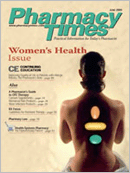Publication
Article
Pharmacy Times
Teenage Drug Diversion—Part 1
Author(s):
The Partnership for a Drug-Free America recently announcedthe results of its2004 Partnership Attitude TrackingStudy. This survey of morethan 7300 teenagers is the largestcontinuing evaluation of teensand drug abuse in the country.The study found that about 20%of teenagers have tried prescriptionpain relievers for nonmedicalpurposes. This percentage wasgreater than that for ecstasy,cocaine, crack, or LSD.
Not surprisingly, the most popularprescription drug of abuse ishydrocodone, with 18% of theteens indicating that they haveused it to get high. This proportionequates to about 4.3 millionyouths in the United States usingthis painkiller to get a rush intotheir bodies. The study also lookedat OxyContin specifically but did not look at other forms ofoxycodone—something I would like to have seen. OxyContinwas found to be a problem in about 10% of the youth.
Because most of these drugs are not being legitimatelyprescribed to the teenagers, the question is, where are theygetting the drugs? One of the best answers is, likely fromtheir parents', friends', or other relatives'medicine cabinets.
Over the past few years, teenagers have found that prescriptiondrugs can be a good or better source for their highthan traditional drugs. If they can find these drugs in medicinecabinets, there is another bonus—the drugs are free!Why should they pay for illicit drugs for which they haveno idea of the purity, when they can be assured that theirtablets'contents are backed by the world's pharmaceuticalindustry?
Many times teens can access these drugs in their ownhome when their parents do not discard unused pain medication.Some teens may have a younger brother who takesmethylphenidate on a regular basis, and a few pills takenevery weekend are not really missed. It is dangerous enoughwhen the teens take these pills themselves, but they oftenshare the pills with their peers, who may be opiate-naiveand even more susceptible to overdoses.
The advent of pain management and the increase inhome care for the terminally illhave unfortunately helped prescriptiondrug-seeking teenagers.The source may be a teen or afriend, relative, or neighbor who islegitimately taking large quantitiesof pain relievers. Because ofthe large amount of these drugsavailable in residences, teenagerswho have access may be able to bea prescription drug resource totheir friends.
One recent tragedy involved ateenager whose friend's live-ingrandmother had recently died.The family had not destroyed theremaining prescription opioidsthat were left after her death. Theteenager experimented with someremaining fentanyl and then wenthome late at night and fell asleep.His father went in to wake himlate in the morning after he didnot get up and found him dead from an overdose of thepotent drug.
Maybe one of the most important messages law enforcementand pharmacists can impress upon parents across thenation is to know what is in your medicine cabinet. Drugsthat are currently being used, especially controlled substances,should be secured and taken as directed. If childrenare in the home, or if teenagers have access through babysittingor other means, parents should keep their medicationin nontraditional but safe areas.
When patients have finished their medications, the drugsshould be properly disposed of according to the state's regulationsand laws. Patients also should understand that givingany of their prescription medicine to others can be afelony drug crime, and certainly can be dangerous for theultimate user.
Next month we will discuss some other resources teenagersmay have to procure prescription drugs illegally.
John Burke, director of the Warren County, Ohio, drugtask force and retired commander of the CincinnatiPolice Pharmaceutical Diversion Squad, is a 32-year veteranof law enforcement. For information, he can bereached by e-mail at burke@choice.net, via the Web sitewww.rxdiversion.com, or by phone at 513-336-0070.







